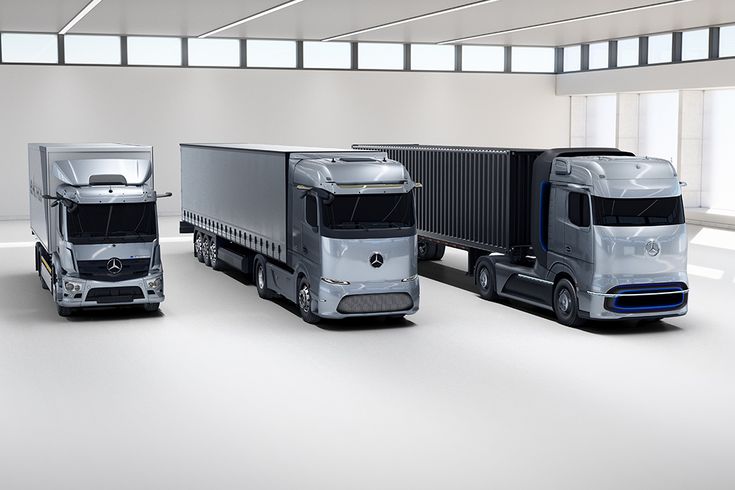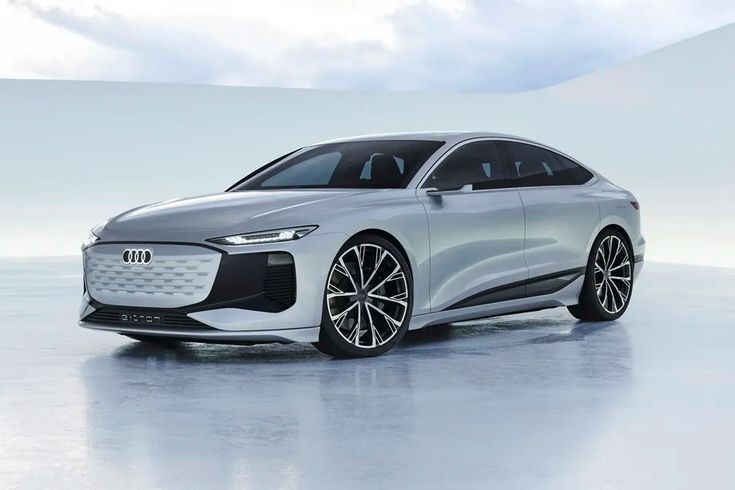In the ever-evolving landscape of transportation, the demand for affordable electric vehicles has been steadily rising. As concerns about climate change and fossil fuel depletion continue to grow, consumers are seeking long-range, low-cost options that align with their commitment to sustainability. The good news is that advancements in technology and manufacturing have made it possible for electric vehicles to become more accessible than ever before.
In this article, we will explore the world of affordable electric vehicles, delving into their long-range capabilities, low operational costs, and eco-friendly benefits. Whether you’re a budget-conscious commuter searching for an efficient mode of transportation or an environmentally conscious individual looking to reduce your carbon footprint, join us as we embark on a journey through the realm of sustainable driving.
The Rise of Electric Vehicles (EVs)
The rise of electric vehicles (EVs) has been nothing short of remarkable. In just a few short years, these eco-friendly cars have gone from niche products to mainstream options for drivers around the world. One major factor contributing to this surge in popularity is the increasing availability and affordability of long-range models.
Gone are the days when EVs were limited by their range, only able to travel short distances before needing a recharge. Thanks to advancements in battery technology, modern EVs now offer impressive driving ranges that rival those of traditional internal combustion engine vehicles. With some models boasting ranges upwards of 300 miles on a single charge, range anxiety is becoming a thing of the past.
Additionally, the cost of owning an EV is also dropping, making them more accessible to everyday drivers. As production volumes increase and economies of scale kick in, automakers have been able to lower the prices of electric models without compromising quality or performance. Alongside governmental incentives and policies aimed at promoting sustainable mobility solutions, it’s no wonder that more consumers than ever are embracing EVs as their primary means of transportation.
From environmental benefits such as reduced carbon emissions and improved air quality to long-term cost savings on fuel and maintenance expenses—electric vehicles offer an enticing package for anyone looking for greener transportation options. As we continue down this road towards electrification, it’s important for consumers to explore all available choices and find an affordable electric vehicle that suits their needs while also prioritizing sustainability and efficiency.
Why Affordable Electric Vehicles Are Important
Affordable electric vehicles (EVs) play a crucial role in accelerating the transition toward sustainable transportation. While EVs have garnered attention for their environmental benefits, the high cost of these vehicles has been a barrier to widespread adoption. Bringing down the prices of EVs is not only critical for individual consumers but also for achieving broader sustainability goals.
One significant reason why affordable EVs are important is the potential to reduce greenhouse gas emissions on a larger scale. Currently, transportation is one of the biggest contributors to global carbon dioxide emissions, and transitioning from traditional internal combustion engines to electric power can significantly mitigate this impact. However, without affordable options, many people will continue driving conventional vehicles simply due to financial constraints. Making EVs more accessible ensures that individuals from all income brackets can make environmentally conscious choices.
Additionally, affordable EVs can help create economic opportunities and drive job growth in various industries. As demand for affordable electric vehicles rises with lower price points, there will be increased manufacturing needs and charging infrastructure development. This creates avenues for job creation within these sectors along with research and development activities associated with advancing battery technology and related components. By supporting an affordable EV market, governments and industry stakeholders pave the way for sustainable economic growth while reducing dependency on fossil fuels.
In conclusion, making electric vehicles more accessible through affordability is crucial in transforming transportation systems worldwide towards sustainability. The ability to reduce carbon emissions at a larger scale rests upon ensuring that individuals from all walks of life have access to clean energy alternatives without compromising their financial well-being.
Long Range: Breaking the Range Anxiety Barrier
As electric vehicles (EVs) become more prevalent on our roads, one of the major concerns among potential buyers is range anxiety. The fear that their EVs will run out of charge before reaching their destination has hindered the widespread adoption of these eco-friendly cars. However, advancements in battery technology and infrastructure improvements are breaking the range anxiety barrier and making long-range EVs more accessible than ever.
One key technological breakthrough is the development of high-capacity batteries that offer impressive mileage on a single charge. Gone are the days when EV drivers had to meticulously plan their trips around charging stations, as many modern affordable electric vehicles can now easily achieve ranges upwards of 300 miles per charge. This not only allows for longer road trips but also provides peace of mind to daily commuters who never have to worry about running out of juice during their regular drives.
Moreover, investments in charging infrastructure are helping ease range anxiety by expanding the accessibility and convenience of recharging options. Rapid DC chargers are being installed at strategic locations such as gas stations, shopping centers, and highways to ensure that EV owners always have a quick and easy way to power up. Additionally, there has been a surge in home charging solutions, with affordable wall-mounted chargers becoming increasingly common. These convenient options help eliminate any lingering worries about finding a charging station when needed most.
With these advancements in technology and infrastructure, it is clear that we are entering an era where range anxiety will no longer be a significant concern for those considering purchasing an electric vehicle.
Low Cost: Making EV Ownership Accessible to All

One of the biggest barriers to the widespread adoption of affordable electric vehicles (EVs) has been their high cost, often out of reach for many consumers. However, recent advancements in technology and growing competition in the market have led to a significant reduction in the price of EVs. Manufacturers are now producing affordable electric vehicles that offer long-range capabilities, making EV ownership accessible to a broader range of individuals.
With government incentives and subsidies supporting eco-friendly transportation options, the overall cost of owning an electric vehicle continues to decrease. Additionally, advancements in battery technology have improved energy efficiency, allowing for longer ranges on a single charge without sacrificing performance. This means that consumers no longer have to compromise their driving needs or budget when considering switching to an electric vehicle.
Affordable electric vehicles also open up opportunities for sustainable driving without breaking the bank. The reduction in fuel costs associated with EVs compared to traditional gas-powered vehicles can result in significant long-term savings for drivers. By opting for low-cost electric options, consumers can not only contribute towards reducing pollution but also save money on maintenance costs and fuel expenses in the long run. As more affordable options become available, we can expect a shift towards electrification that is accessible and inclusive to all individuals seeking sustainable transportation solutions.
Sustainable Driving: Environmental Benefits of EVs
One of the most significant environmental benefits of affordable electric vehicles (EVs) is their zero tailpipe emissions. Unlike traditional internal combustion engine vehicles that emit harmful pollutants such as carbon monoxide, nitrogen oxides, and particulate matter, EVs produce no exhaust emissions while driving.
This means that they do not contribute to air pollution or smog formation, making them an excellent choice for sustainable driving. By choosing to drive an electric vehicle, individuals can help improve air quality and reduce respiratory health issues in their communities.
In addition to reducing local air pollution, the use of EVs also helps combat climate change by significantly reducing greenhouse gas emissions. According to a study by the Union of Concerned Scientists, EVs produce less than half the amount of carbon dioxide emissions compared to conventional gasoline-powered cars over their lifetime.
When charged with renewable energy sources such as solar or wind power, the emissions associated with charging an EV are virtually zero. This makes affordable electric vehicles a key component in transitioning towards a low-carbon economy and achieving global climate goals.
The Top Affordable EV Models in the Market
In the world of electric vehicles (EVs), there has been a surge in affordable models that offer both long-range and low-cost.
One standout option is the Nissan Leaf, which has been praised for its impressive range and affordability. With a starting price below $35,000, the Leaf boasts an estimated range of up to 226 miles on a single charge. This makes it an appealing choice for those looking to make the switch to sustainable driving without breaking the bank.
Another exciting entry in the affordable EV market is the Chevrolet Bolt EV. With a starting price of just under $40,000, this hatchback offers an impressive range of up to 259 miles on one charge. The Bolt ticks all the right boxes with its spacious interior, smooth acceleration, and advanced safety features. Plus, with federal tax credits available for qualifying buyers, it becomes even more budget-friendly.
Additionally, Hyundai has joined the game with its Kona Electric model. Starting at around $38,000 and offering an estimated range of 258 miles per charge, this compact SUV packs quite a punch when it comes to affordability and efficiency. With its sleek design and ample cargo space, not only does it meet practical needs but also fulfills eco-conscious aspirations.
Conclusion
In conclusion, embracing a greener and more affordable future is not only essential for the health of our planet but also for our own financial well-being. Electric vehicles (EVs) offer a sustainable solution to our transportation needs while lowering emissions and reducing our dependency on fossil fuels. The advancements in EV technology have made them more accessible and cost-effective than ever before.
One key aspect that has contributed to making EVs more affordable is the declining cost of battery prices. Over time, manufacturers have been able to produce batteries at a lower cost, resulting in more affordable electric vehicles for consumers. Additionally, governments around the world are providing incentives such as tax credits and subsidies to encourage the adoption of EVs. These incentives further reduce the upfront costs and make owning an electric vehicle a viable option for more people.
Moreover, embracing a greener future goes beyond just purchasing an electric vehicle; it encompasses incorporating sustainable practices into all aspects of our lives. This could include installing solar panels at home or utilizing community-owned renewable energy projects. By shifting towards renewable sources for electricity generation, we can ensure that charging an electric vehicle does not contribute to greenhouse gas emissions.
Embracing a greener and more affordable future through the widespread adoption of electric vehicles is within our reach. As individuals, we have the power to make informed choices that benefit both ourselves and future generations. By choosing an electric vehicle over a traditional gasoline-powered car, we can contribute to creating cleaner air, reducing carbon emissions, and saving money in the long run.
